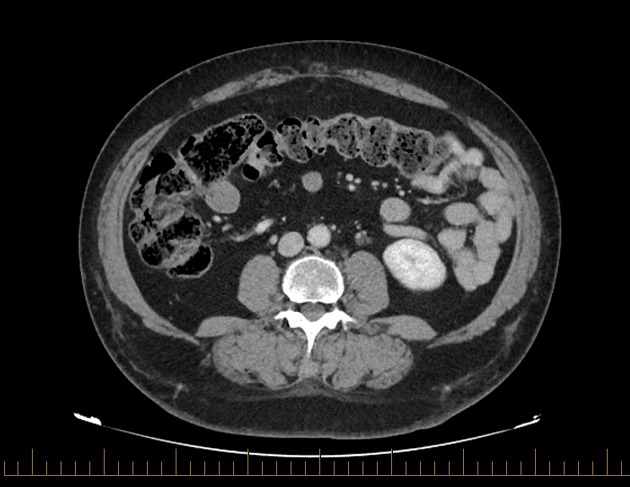Anterior resection is a surgical procedure to resect the rectum and sigmoid colon while preserving the anal sphincter complex.
On this page:
Images:
Indications
cancer of the rectum (most common)
severe diverticular disease
Procedure
Most anterior resections are performed laparoscopically, although historically, they were performed using an open technique 1.
The splenic flexure is mobilised, and the inferior mesenteric artery and vein are ligated close to their origins, which allows for the excision of as much lymphatic tissue as possible for a good oncological resection. The dissection is continued below the peritoneal reflection to carry out a total mesorectal excision (excising the rectum along with the accompanying mesorectum significantly reduces local recurrence rates).
The colon is ligated with staples at both ends and removed through a suprapubic incision. The colon and lower rectum are then joined with a stapled anastomosis. The splenic flexure may require mobilisation to create enough length for a tension-free anastomosis.
Occasionally, a temporary loop ileostomy is required to divert enteric contents while the anastomosis heals, particularly if there has been preoperative neoadjuvant radioation therapy or chemotherapy treatment.
Complications
anastomotic leak (~10%): typically in the first postoperative week 2
injury to adjacent structures (e.g. ureter, gonadal vessels)
bleeding
wound infection
small bowel internal hernia: more commonly asymptomatic than symptomatic from bowel strangulation or obstruction 4
Radiographic appearances
The appearances described here are of the normal postoperative state.
Plain radiograph
Rectal staple line may be visible in the pelvis.
CT/MRI
The upper rectum and distal sigmoid colon will be absent, though this depends on the extent of the resection. The anastomosis will typically be visible low in the pelvis. The presacral space will be larger than normal, and may contain fat or a small amount of soft tissue in the normal postoperative state, though larger amounts of soft tissue may indicate local recurrence 3.





 Unable to process the form. Check for errors and try again.
Unable to process the form. Check for errors and try again.